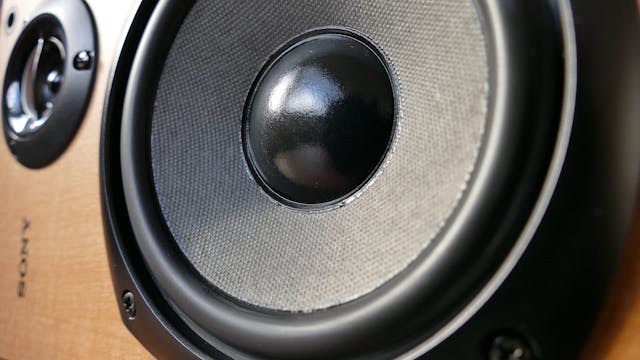
What is the upper limit of a speaker? The loudest speaker ever made produced 165 decibels. No speaker could ever go above 194 dB, because sound has an upper limit, just like temperature.
There are a few considerations when trying to make a speaker that can produce very loud sounds. The first is that the speaker has to be able to survive the sound, the second is that any people in the way of the sound have to be able to survive it, and the third is that the sound wave still has to be sound. If you go to a rock concert, the speaker is probably producing between 90 to 120 decibels (dB). A jet engine on take off is about 140 dB. Humans exposed to 140 dB, will experience discomfort and painful vibrations in their bodies. 150 dB makes a person feel like they are being compressed under water. 160 dB makes people physically sick. Most military stun grenades are between 160 and 180 dB. 190 dB will rupture the eardrums and injure the internal organs. 200 dB is pretty much fatal because the lungs rupture. So, when trying to make a speaker more powerful than 165 dB, there is the very real probability that you could kill someone.
Also, once sound gets over 194 dB, it is no longer considered to be sound. It is a pressure wave, or a shock wave, like that from an atomic bomb. Sound is produced by energy that is imparted from a source to the atoms in the air around it. The energy makes the atoms vibrate more and they collide with other atoms, passing the sound wave on. Each time the atoms collide with other atoms, a little of the energy is lost as heat and the sound wave slowly loses energy, until it fades away to nothing. To make sound, you have to be able to impart energy to the air, and that is what a speaker does. However, there is a limit to how much energy the air can take. Decibels are a measure of sound, but they are a logarithmic scale, which means they go up in multiples. So, for example, when a sound goes up by 10 dB, it is not plus ten, it is ten times louder. If a sound goes up from 50 dB to 60 dB, it becomes ten times louder. If it goes up to 70 dB, it is 100 times louder. If it goes up to 110 dB, it is 1,000,000 times higher.
The amplitude of the wave, which is how far the vibrating particles can move, and is directly related to how much energy they are carrying, is what dictates the loudness of a wave. When sound gets to 194 dB, the amplitude of the waves is so big that they start to create a vacuum between them because all of the particles move. Once this has happened, more energy doesn’t travel through the molecules, as sound does, but pushes them in front of it, as a shockwave does. So, over 194 dB, it is no longer sound. It is a shockwave rather than sound, but a nuclear bomb produces 280 dB or more, which is obviously fatal.
A speaker works by taking an electric signal and converting it into mechanical energy. At its most basic, a speaker has a cone with a central piece that is attached to the cone by an airtight seal and is free to move back and forth. Behind that part of the cone is an electric coil that moves when a current is sent through it. The coil moves the central part of the speaker back and forth, pushing and pulling the air in front of the speaker back and forth and making a sound wave. Because of this, to make a louder sound, you need a bigger speaker. The loudest speaker in the world is a combination of 40 speakers and creates a wall of sound. It is physically dangerous, but is used to simulate battlefield situations.
The problem with creating a speaker that is very loud is that the cone and the moving parts of the speaker have to be able to withstand the energy that is going through them. A louder speaker has to move more air, more forcibly, than a smaller speaker. This means the speaker has to be very strong, but stronger speakers have heavier parts and don’t move as easily. It is difficult to make a speaker that loud, which gives the speaker an upper limit.
As very loud sounds can harm people, there is no real need for concert speakers to get even louder. The loudest concert ever recorded was a Kiss concert in 2009. The sound reached 136 dB and it caused physical pain with the audience. There were many complaints and the band had to turn the volume down mid show. And this is what I learned today.
Photo by Anthony 🙂: https://www.pexels.com/photo/closed-up-photography-of-brown-wooden-framed-sony-speaker-157534/
Sources
https://decibelpro.app/blog/how-loud-is-a-rock-concert/
https://en.wikipedia.org/wiki/Decibel
https://www.cdc.gov/niosh/topics/aircrew/noise.html
https://newatlas.com/loudest-possible-sound/59746/
https://byjus.com/physics/amplitude-frequency-period-sound/
https://blog.landr.com/how-do-speakers-work/
https://www.soundguys.com/how-speakers-work-29860/
https://www.selby.com.au/blog/are-bigger-speakers-always-better
https://www.acoustic-supplies.com/the-4-loudest-speakers-and-subwoofers-in-the-world/
